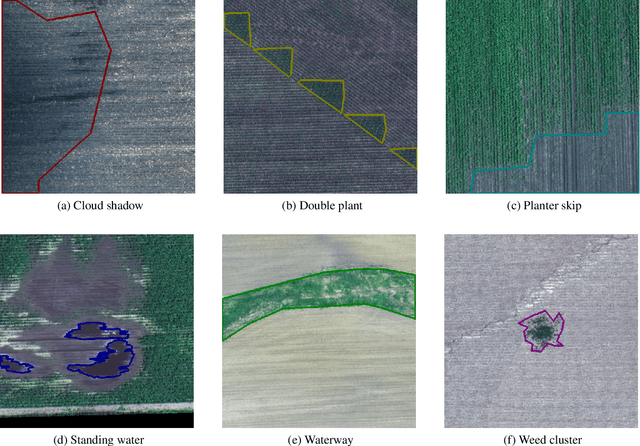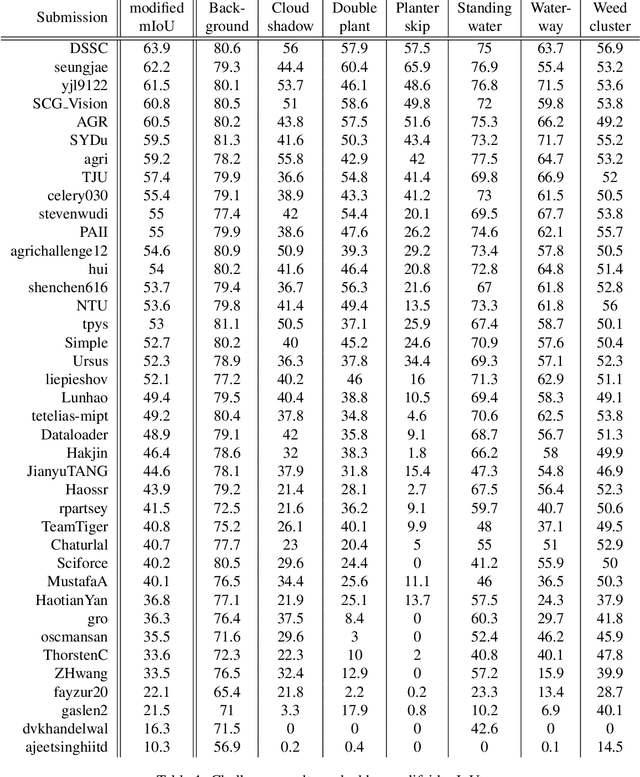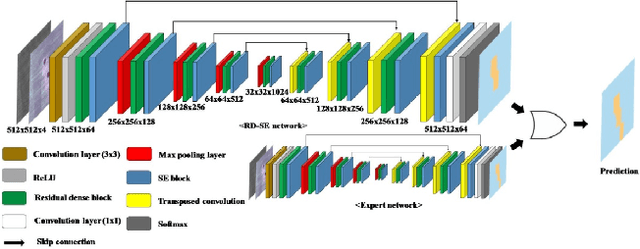Van Thong Huynh
Adaptation of Distinct Semantics for Uncertain Areas in Polyp Segmentation
May 13, 2024Abstract:Colonoscopy is a common and practical method for detecting and treating polyps. Segmenting polyps from colonoscopy image is useful for diagnosis and surgery progress. Nevertheless, achieving excellent segmentation performance is still difficult because of polyp characteristics like shape, color, condition, and obvious non-distinction from the surrounding context. This work presents a new novel architecture namely Adaptation of Distinct Semantics for Uncertain Areas in Polyp Segmentation (ADSNet), which modifies misclassified details and recovers weak features having the ability to vanish and not be detected at the final stage. The architecture consists of a complementary trilateral decoder to produce an early global map. A continuous attention module modifies semantics of high-level features to analyze two separate semantics of the early global map. The suggested method is experienced on polyp benchmarks in learning ability and generalization ability, experimental results demonstrate the great correction and recovery ability leading to better segmentation performance compared to the other state of the art in the polyp image segmentation task. Especially, the proposed architecture could be experimented flexibly for other CNN-based encoders, Transformer-based encoders, and decoder backbones.
DCTM: Dilated Convolutional Transformer Model for Multimodal Engagement Estimation in Conversation
Jul 31, 2023Abstract:Conversational engagement estimation is posed as a regression problem, entailing the identification of the favorable attention and involvement of the participants in the conversation. This task arises as a crucial pursuit to gain insights into human's interaction dynamics and behavior patterns within a conversation. In this research, we introduce a dilated convolutional Transformer for modeling and estimating human engagement in the MULTIMEDIATE 2023 competition. Our proposed system surpasses the baseline models, exhibiting a noteworthy $7$\% improvement on test set and $4$\% on validation set. Moreover, we employ different modality fusion mechanism and show that for this type of data, a simple concatenated method with self-attention fusion gains the best performance.
Multi-scale Transformer-based Network for Emotion Recognition from Multi Physiological Signals
May 08, 2023Abstract:This paper presents an efficient Multi-scale Transformer-based approach for the task of Emotion recognition from Physiological data, which has gained widespread attention in the research community due to the vast amount of information that can be extracted from these signals using modern sensors and machine learning techniques. Our approach involves applying a Multi-modal technique combined with scaling data to establish the relationship between internal body signals and human emotions. Additionally, we utilize Transformer and Gaussian Transformation techniques to improve signal encoding effectiveness and overall performance. Our model achieves decent results on the CASE dataset of the EPiC competition, with an RMSE score of 1.45.
Vision Transformer for Action Units Detection
Mar 20, 2023Abstract:Facial Action Units detection (FAUs) represents a fine-grained classification problem that involves identifying different units on the human face, as defined by the Facial Action Coding System. In this paper, we present a simple yet efficient Vision Transformer-based approach for addressing the task of Action Units (AU) detection in the context of Affective Behavior Analysis in-the-wild (ABAW) competition. We employ the Video Vision Transformer(ViViT) Network to capture the temporal facial change in the video. Besides, to reduce massive size of the Vision Transformers model, we replace the ViViT feature extraction layers with the CNN backbone (Regnet). Our model outperform the baseline model of ABAW 2023 challenge, with a notable 14% difference in result. Furthermore, the achieved results are comparable to those of the top three teams in the previous ABAW 2022 challenge.
Generic Event Boundary Detection in Video with Pyramid Features
Jan 11, 2023Abstract:Generic event boundary detection (GEBD) aims to split video into chunks at a broad and diverse set of actions as humans naturally perceive event boundaries. In this study, we present an approach that considers the correlation between neighbor frames with pyramid feature maps in both spatial and temporal dimensions to construct a framework for localizing generic events in video. The features at multiple spatial dimensions of a pre-trained ResNet-50 are exploited with different views in the temporal dimension to form a temporal pyramid feature map. Based on that, the similarity between neighbor frames is calculated and projected to build a temporal pyramid similarity feature vector. A decoder with 1D convolution operations is used to decode these similarities to a new representation that incorporates their temporal relationship for later boundary score estimation. Extensive experiments conducted on the GEBD benchmark dataset show the effectiveness of our system and its variations, in which we outperformed the state-of-the-art approaches. Additional experiments on TAPOS dataset, which contains long-form videos with Olympic sport actions, demonstrated the effectiveness of our study compared to others.
The 1st Agriculture-Vision Challenge: Methods and Results
Apr 23, 2020



Abstract:The first Agriculture-Vision Challenge aims to encourage research in developing novel and effective algorithms for agricultural pattern recognition from aerial images, especially for the semantic segmentation task associated with our challenge dataset. Around 57 participating teams from various countries compete to achieve state-of-the-art in aerial agriculture semantic segmentation. The Agriculture-Vision Challenge Dataset was employed, which comprises of 21,061 aerial and multi-spectral farmland images. This paper provides a summary of notable methods and results in the challenge. Our submission server and leaderboard will continue to open for researchers that are interested in this challenge dataset and task; the link can be found here.
Eye Semantic Segmentation with a Lightweight Model
Nov 04, 2019



Abstract:In this paper, we present a multi-class eye segmentation method that can run the hardware limitations for real-time inference. Our approach includes three major stages: get a grayscale image from the input, segment three distinct eye region with a deep network, and remove incorrect areas with heuristic filters. Our model based on the encoder decoder structure with the key is the depthwise convolution operation to reduce the computation cost. We experiment on OpenEDS, a large scale dataset of eye images captured by a head-mounted display with two synchronized eye facing cameras. We achieved the mean intersection over union (mIoU) of 94.85% with a model of size 0.4 megabytes. The source code are available https://github.com/th2l/Eye_VR_Segmentation
 Add to Chrome
Add to Chrome Add to Firefox
Add to Firefox Add to Edge
Add to Edge